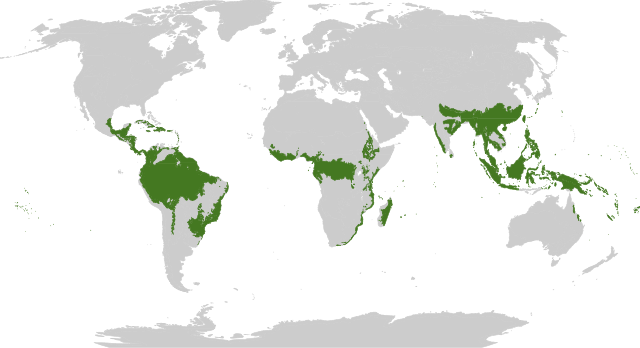Top Qs
Timeline
Chat
Perspective
Tropical Forest Forever Facility
Forest conservation sovereign investment institution From Wikipedia, the free encyclopedia
Remove ads
The Tropical Forest Forever Facility (TFFF) is a proposed blended-finance mechanism to incentivise countries to prevent the deforestation and degradation of moist broadleaf forests.

The fund would use profits from capital market investments to provide results-based payments to rainforest countries.[1] The mechanism was proposed by the Brazilian government[2] with the aim of launching the facility at COP30 in Belem, Brazil in November 2025.[3]
Remove ads
History
A version of this fund concept was originally proposed by World Bank treasurer Kenneth Lay in the 2000s.[1] The mechanism, then called the Tropical Forest Finance Facility received broader attention through an article Lay co-wrote for The Center for Global Development.[4] The current iteration was announced at COP28 in Dubai, UAE in 2023 by Brazil’s Environment Minister Marina Silva and Finance Minister Fernando Haddad.[5]
Remove ads
Government endorsements
The governments of France,[6] Germany,[7] Colombia,[7] the UAE,[7] Malaysia,[7] Singapore[8] and Norway[7] have endorsed the facility or expressed interest in investing. Germany and Norway, are amongst the largest donors for tropical forest conservation, along with the UK.[9] [10]
During a visit to Brazil in December 2024, then U.S. President Biden endorsed the TFFF.[11]
Technical advisors
The World Bank, the U.N. Development Programme, the Organization for Economic Cooperation and Development, as well as the Wildlife Conservation Society, Conservation International, the World Wide Fund for Nature, and Campaign for Nature are technical advisers to the TFFF.[3]
Proposed structure
Summarize
Perspective
The program would consist of two primary institutions, the TFFF and the Tropical Forest Investment Facility (TFIF).[3]
The TFIF is to be a $125 billion fund,[8] constituted through a mix of public and private investments hosted at a Multilateral Development Bank,[12] possibly the World Bank.[8] These funds are to be invested in predominantly global south sovereign bonds.[13] The profits from the fund, after interest payments to the investors, would be dispersed to the TFFF.
The TFFF uses the funds to reward countries for protecting those forests.
To be eligible to receive funds, a country must:
- Have tropical moist broadleaf forests[13]
- A deforestation rate below 0.5%[1]
- Not be a high-income country (as classified by UNCTAD)[13]
Proposed disbursements
Rainforest countries would receive US$4 for every hectare of intact forest as budget contributions.[14] For each hectare deforested that year, a deduction of US$400 is made from that sum.[13] For each hectare degraded, US$100 are deducted.[13] If deductions exceed the payout, countries are not required to pay a penalty. Previously deforested or degraded ecosystems that are fully restored become eligible for payouts again.
20% of total disbursements are to be passed along by the receiving countries to their "indigenous peoples and local communities".[3]
Remove ads
References
External links
Wikiwand - on
Seamless Wikipedia browsing. On steroids.
Remove ads
